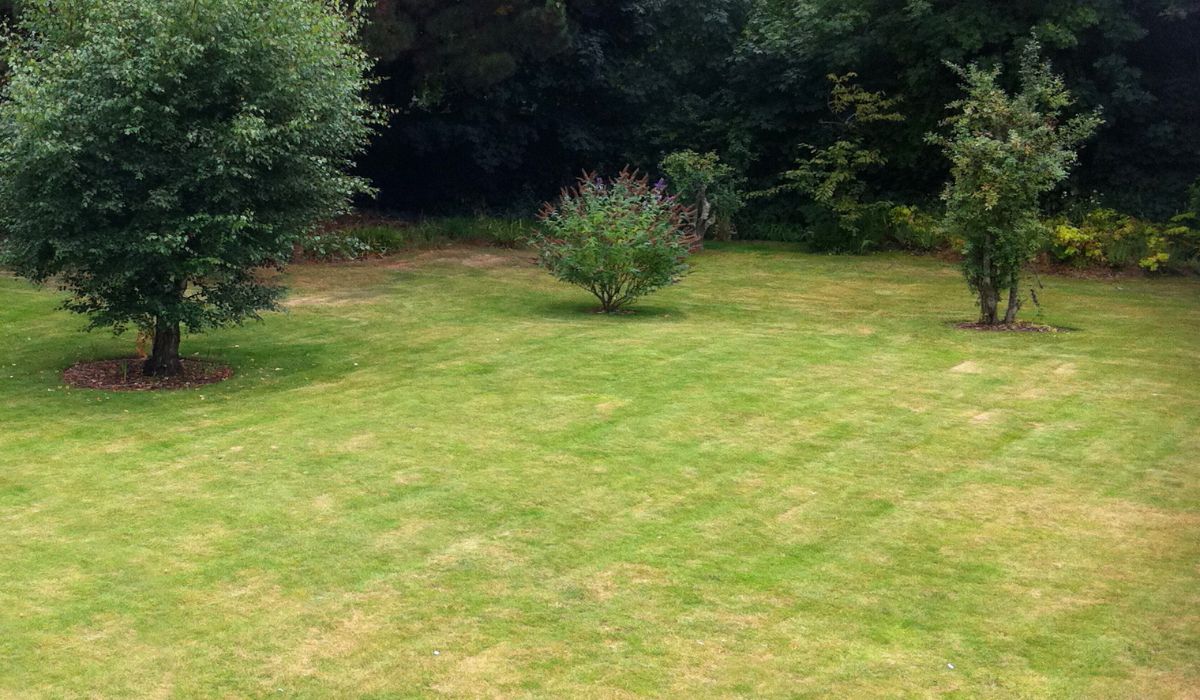
What Causes Compacted Soil and How It Affects Your Austin Lawn
Compacted Soil Could Be Choking Your Lawn — Here’s the Fix No One Talks About
Dead spots despite watering and mowing? Your yard might be dealing with something that sprinklers and lawnmowers can’t fix. Compacted soil—often overlooked—is one of the biggest culprits behind thin turf, stunted grass, and uneven ground. If your lawn won’t grow no matter what you do, the problem is probably buried beneath the surface.
Understanding the difference between lawn aeration vs leveling is key to choosing the right fix. Homeowners across Austin trust All Seasons Austin Landscaping for lawn aeration services and targeted lawn fertilization treatments that help restore healthy root systems and improve long-term turf growth.
Let’s break down what’s really going on underground—and how to fix it.
Don’t wait for stress symptoms to spread.
What Causes Compacted Soil in Austin?
Soil compaction doesn’t happen overnight. It builds slowly, especially in a climate like Austin’s, where extreme heat and clay-heavy terrain create the perfect storm. When topsoil becomes compressed, it loses the space between particles that roots need to spread, breathe, and absorb nutrients.
Here are the top contributors:
Foot Traffic
Frequent walking over the same paths, especially in shaded areas, gradually creates compacted soil that restricts air, water flow, and root development.
Heavy Clay Content
Central Texas soil has naturally poor drainage and a tight texture, making it more prone to compaction.
Equipment Pressure
Lawn mowers, wheelbarrows, and construction vehicles create repeated surface pressure that leads to compacted soil and long-term root restriction.
Drought Cycles
Extended dry periods bake the ground, hardening the surface. When rain finally comes, it runs off instead of soaking in.
For help maintaining resilient turf through Austin’s harsh climate, see our guide on how to maintain a lush lawn in drought conditions.
Once compacted soil takes hold, even fertilizing and watering become ineffective. You may notice water pooling or running off, uneven grass height, and thatch build-up—all signs that oxygen and nutrients can’t penetrate the ground.
Why Common Fixes Often Fail on Compacted Soil?
It’s easy to assume your yard just needs a little help. Many homeowners try fixes like dethatching or applying more seed and fertilizer, hoping that will revive their lawn. Unfortunately, these band-aid methods rarely treat the root cause. Here are two frequently attempted strategies:
1. Basic Lawn Aeration
Standard lawn aeration in Austin TX involves poking holes into the ground using spike or core machines. This does help by temporarily relieving pressure and improving airflow. However, not all aeration is created equal—especially in severely compacted or uneven terrain.
That’s where the lawn aeration vs leveling debate kicks in. Aeration can only do so much if the soil grade is already off-balance or suffering from years of heavy compression.
2. Dethatching
Dethatching clears the tangled layer of dead grass between the green blades and the soil. While this improves oxygen flow, it doesn’t correct underlying grade issues or break through deep compaction zones.
Explore how lawn aeration and overseeding work together to promote stronger, healthier grass in our post on benefits of lawn aeration and overseeding.
If your lawn won’t grow evenly even after you’ve aerated and dethatched, it’s time to consider a more structural fix.
When Lawn Leveling Is the Real Fix
Leveling a lawn isn’t just about aesthetics. It’s a powerful strategy to reverse the damage caused by compacted lawn soil. By redistributing soil and correcting the grade, leveling eliminates dips, low spots, and hardened patches where roots struggle to survive.
All Seasons Austin Landscaping has seen many cases where traditional aeration just wasn’t enough. When lawns suffer from clay buildup and years of uneven topdressing, lawn leveling in Austin TX often proves to be the breakthrough solution.
DIY lawn leveling can be risky if you’re unsure how deep the problem goes. Improper soil blends or poorly applied layers can make matters worse by suffocating roots further. Our professionals assess compaction depth, drainage flow, and root exposure before any leveling begins.
Here are key indicators you might need lawn leveling:
- Water pools in specific areas after rain
- Grass grows in patches or not at all
- You feel hard, uneven bumps when walking barefoot
- Your mower scalps certain areas due to dips
By resetting the soil’s grade and relieving surface compaction, you give your grass a new foundation to thrive.
Don’t let compacted soil keep damaging your lawn beneath the surface. Restore balance and beauty to your yard with the help of our trusted local team. Reach out today to schedule a personalized lawn assessment.
Aeration + Leveling = Ultimate Lawn Recovery
When you combine aeration with lawn leveling, you don’t just fix symptoms—you solve the actual problem. Core aeration opens channels for air, water, and nutrients, while leveling resets the surface and smooths out irregularities.
Together, these services:
- Improve root access to oxygen and water
- Correct low or compacted areas that trap moisture
- Encourage stronger turf growth and better nutrient absorption
- Restore the soil structure beneath your lawn
In many Austin neighborhoods, our clients have turned around completely bald yards by pairing lawn aeration in Austin TX with precision leveling. One South Austin homeowner struggled for years with patchy grass near their patio. After our aeration and leveling combo, the same space grew full and green within one season—with proper lawn fertilization in Austin TX boosting the recovery.
💡 Remember: compacted soil doesn’t always look dramatic from above. It can lurk just below the surface and quietly suffocate your turf. That’s why we always evaluate both surface grade and subsurface hardness before making recommendations.
How Seasonal Lawn Care Prevents Future Compacted Soil?
Staying ahead of compaction is easier with a plan. Seasonal lawn care in Austin TX means prepping your soil before it becomes a problem. Spring and fall are ideal times to aerate, feed, and level the yard when temperatures are mild and roots are actively growing.
Here’s what we recommend:
- Spring: Core aeration, spot leveling, and fertilization to support fresh root growth
- Summer: Monitor watering patterns and avoid excess mowing or traffic on heat-stressed turf
- Fall: Full lawn leveling and aeration combined with overseeding for dense turf and healthy winter prep
Avoid using DIY lawn leveling tools or rented gear without proper evaluation—mistakes can cost you a full season of progress. If your lawn won’t grow and keeps bouncing back to the same patchy state, it’s a signal your yard needs deeper attention.
Compacted Soil Won’t Fix Itself — Let’s Get It Right
Compacted soil won’t fix itself, but the solution doesn’t have to be complicated. Instead of continuing to guess or spend on short-term patches, let the trusted team at All Seasons Austin Landscaping evaluate whether your yard needs lawn aeration, lawn leveling, or both.
Backed by years of local expertise and a 100% satisfaction guarantee, we’ve helped hundreds of Austin homeowners reclaim healthy, vibrant lawns using proven, soil-specific methods. It’s time to restore your landscape from the roots up. You can also explore more tips in our Seasonal Lawn Care Blog.
